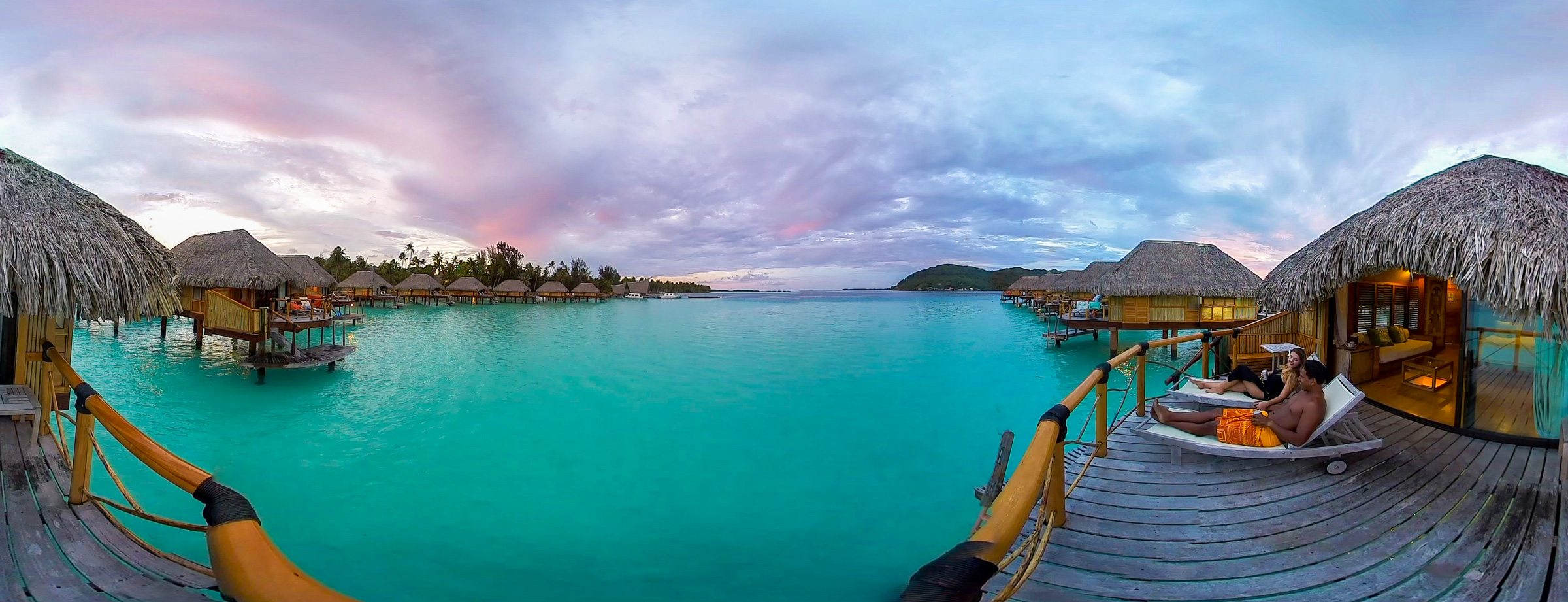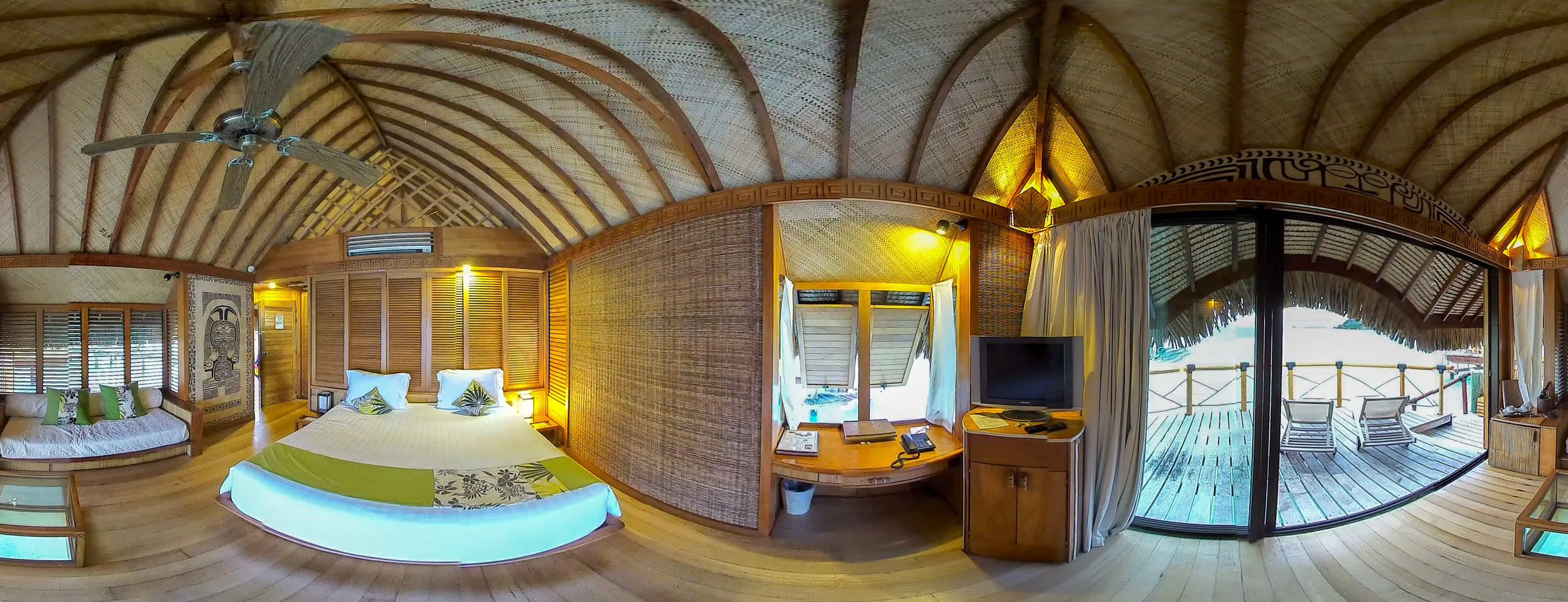Tahiti VR Behind the Scenes
One of our Bora Bora crew members. Image courtesy of Wasim Muklashy
An inside look at shooting virtual reality (VR) and 360 footage in the Islands of Tahiti
It’s hard to imagine a destination that could look better in virtual reality (VR) than the islands of Tahiti, from its coral gardens and overwater bungalows to its epic purple sunsets. Naturally, when my company—superswell VR—was given a prototype of the world’s first true 3-D omniview camera, we took it straight to the islands of Tahiti.
Our mission was to capture jaw-dropping VR footage of Tahiti while putting the prototype VR camera to the test. We’d be monitoring the camera’s performance in extreme heat, high humidity, salt water conditions and aggressive wind. Little did we know, we’d also be observing how it fared in incredibly unpredictable conditions—surrounded by a dozen sharks.
Things got off to a rough start, however, when our engineer discovered that our underwater camera housing got scratched in transit. We started putting a plan in motion to get a new underwater housing sent to us within 48 hours, but our chances of meeting that deadline were not looking good. We didn’t let that stop us though.
The bulk of our shoot was to take place on Bora Bora, where we’d capture its famous overwater bungalows, marine life and heiva dancers in VR. We rearranged our schedule to move back the underwater shoot and instead got some beauty shots of our surroundings.
The crew's arrival on Bora Bora
Shooting in 360 degrees is nothing like shooting with an average camera. Everything and everyone will be in the frame, except for the dead area underneath the camera. We used a tripod extension to give the camera more height, but part of the tripod will always be in the shot. That area is usually covered with a logo in post.
As our Bora Bora shoot progressed, we were under the wire, waiting for our equipment to arrive. In order for it to work, our engineering team in San Jose, Calif., had to deliver the underwater housing to my husband in LA in a matter of hours. He then rushed to LAX to deliver it to the appropriate representative at the Air Tahiti Nui counter. Meanwhile, the managing director of Tahiti Tourisme North America had to find a friend he could trust, who just happened to be flying to Papeete the next day. That person would have to hand-carry the housing onboard the flight. Through the power of Facebook, we connected with Dick Bailey—the president of Paul Gauguin Cruises—who became our “mule” for the long-haul flight. A few car rides, a boat ride and an inter-island flight later, the underwater housing made it to us in perfect condition. It was an incredible feat, and we’re eternally thankful to everyone who helped us along the way.
In the back of our minds though, we knew that our underwater solution might not work correctly outside of the lab environment. Get this: Everything about the underwater camera solution was custom-made for the shoot. The housing we stressed over was really just a perfectly-shaped lightbulb cover. The battery was created separately, so that it wouldn’t overheat in the underwater housing. It was housed in a gun case, of all things, and connected to the camera with PVC pipe.
We watched in awe as our engineer got into the water with the underwater camera among sting rays and sharks—definitely not something he was able to test in the lab beforehand. With the help of our oddball guide, Ramon, we were successful in getting a few solid shots of tropical fish, rays and sharks before our equipment shorted out on us.
Our prototype camera exposed to the sun and humidity. Image courtesy of Wasim Muklashy.
Next, we were off to Huahine to capture its archeological sites and natural beauty. This meant, we’d be hiking deep into the backcountry with our gear during what felt like the hottest day of the year.
Would the camera stand up to the relentless temperatures? Yep. It sure did. The camera actually did far better than we and the footage we captured was awesome. Despite the challenges of shooting in a remote location with extreme weather, the 360 3-D footage we captured in the islands of Tahiti is going to blow your mind.
Tahiti VR / 360 videos
See Bora Bora's overwater bungalows in VR via YouTube here or via Samsung VR here.
Note: This is an immersive 3-D virtual reality experience. For better results, view in a Google Cardboard using the YouTube app on your mobile device, or in the Firefox, Chrome, Opera, or Internet Explorer desktop browser. For the best experience, go to Samsung VR in your Gear VR headset.
More Tahiti VR/ 360 videos will be added to this blog post as they go live. Stay tuned!
You can also stay updated on our upcoming VR projects in Denmark; Israel; and Portland, Maine, by visiting the superswell VR website or following us on Facebook, Instagram and Twitter.





Our trip to the Islands of Tahiti was made possible by Tahiti Tourisme. Views expressed are my own.



